I believe that reinventing higher education is one of humanity’s important milestones going forward. Here I recount my experience of a recent gathering of creators of alternatives to the mainstream university. It is one window open to the messy process of reinventing higher education and an invitation to walk through the door.
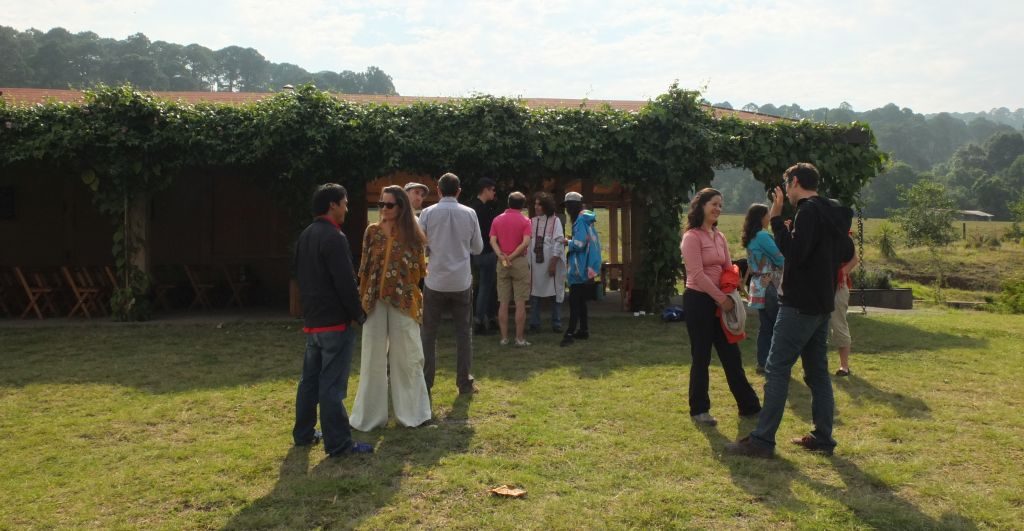
We gathered at a Symposium held at the Universidad del Medio Ambiente, In Valle de Bravo, Mexico, from the 27-29 of May 2016. I got to Mexico City a day before to travel with Udi and Genaro to Valle. I was very curious to meet Udi. He and his wife Kelly resigned from UK academia and started a one year trip to alternative universities around the world to make a documentary. Their project is called Enlivened Learning and I wanted to know more about it. Genaro – a small farmer, in his words – just returned to Mexico from Hawaii where he learned (even more) about agroecology. He is also the co-founder of a university called Instituto Superior Intercultural Ayuuk, formed by 11 indigenous groups of the Oaxaca mountains. When we got to Valle, Victoria was waiting with a welcoming “at last you are here” smile. Victoria is one of the co-founders of Universidad del Medio Ambiente (UMA). Before UMA, Victoria was putting her Phd in economics to work for the environment, promoting the creation of a Natural Protected Area in Valle de Bravo and setting up a Trust Fund for environmental projects. The frustration with the way projects received were researched was one of the impulses for starting UMA. Here they are, the first three learning architects I met:
Victoria was also responsible for all of us converging there. UMA together with Un-School of Disruptive Design in New York were the institutions behind the Symposium and Victoria and Leyla – the Unschool founder – were going to be our facilitators. We arrived at our homestay, a house with a serene lake view. There we joined Liora – long time actionist and co-founder of Gaia University (Global) and Johannes – co-founder of UnaVision (Germany), an organization dedicated to learning journeys.
We sat on comfy armchairs overseeing the lake and a casual conversation started. It kept going and growing for the next three days. To organize my thoughts on it, I will answer three questions: “What?”, “So what?”, “Now what?”.
What (happened)?
Friday (27th of May) – Get to know each other
A twenty minute drive from Valle’s center, there is UMA’s beautiful campus. We walked through a garden that opens up in a wide green pasture. The main building is composed of a central courtyard surrounded by classrooms and offices. The four corners are open, shaded by a green roof. The mustard colored bricks were made right there, from the clay of the land. The whole building has a warm and natural feel. Next to the main building, there is a kitchen and a wide porch. On that porch we sat at a rectangular table that could fit the whole group. One by one people showed up at the table and introduced themselves.
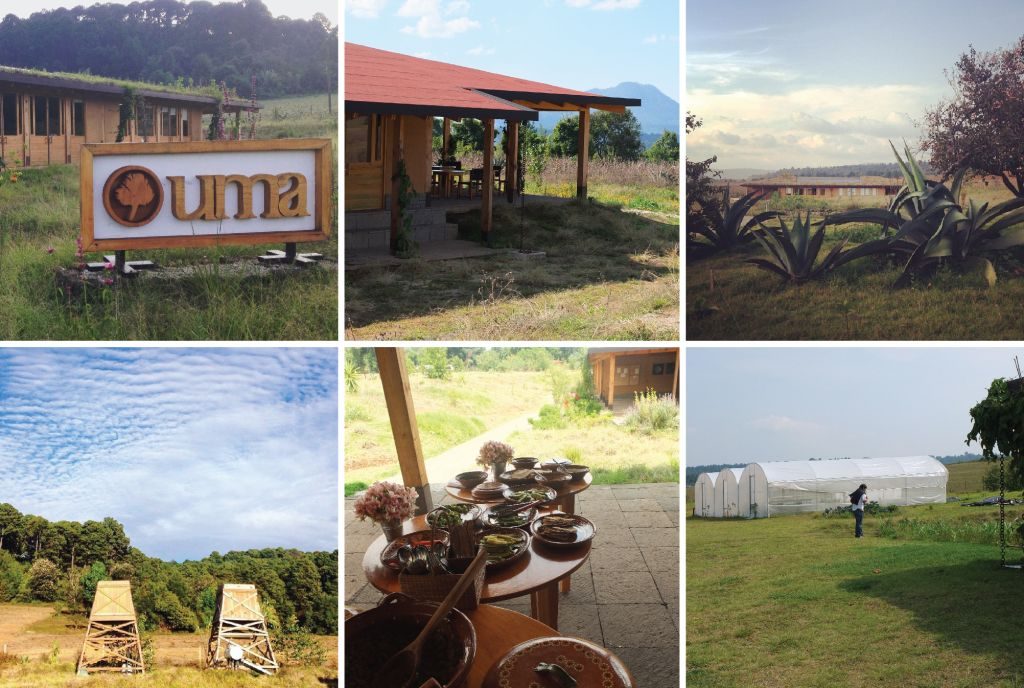
After breakfast, we made a circle on the grass and Victoria welcomed us and introduced the three-day flow. We would present ourselves and our work in the first day, and explore, brainstorm, prototype and plan in the next two days. A round of brief introductions followed and then we went for a silent walk around the UMA campus to get familiar with the place, gather our thoughts and intentions, and arrive. My intention was to make long-time friends and listen deeply. I also wanted help with deciding where to go next in Latin America for documenting my Break/Free from University book.
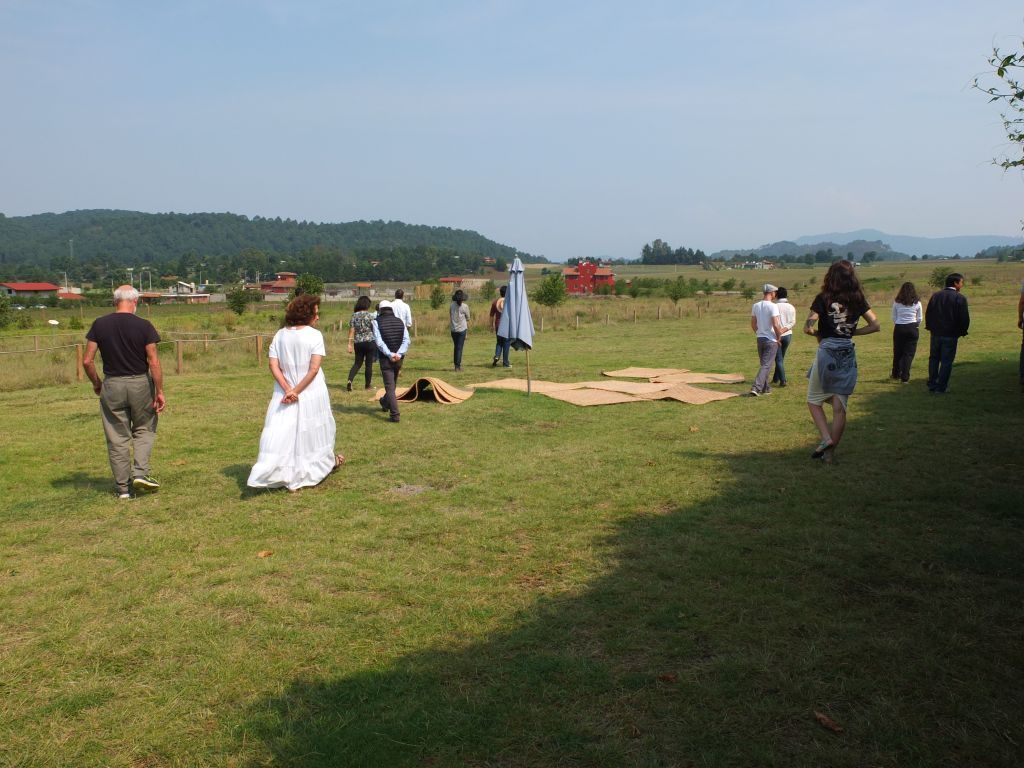
Back in the main building, each of us took 5-10 minutes for presentations. We had, in that room, a few hundred years of experience in trying to disrupt, reinvent or improve (higher) education. Here is a gallery with all 22 of us:
In between presentations we took a walk in the woods, paired up for a conversation about remembering a moment in our childhood when we felt a special connection with nature. I walked with Silvia, who used to live in big cities like London and Mexico City but now lives in a ranch in Valle that is a space designed for home-schoolers. I shared a memory of me watching ants for long stretches of time asking myself “What are they doing?”. Silvia had a similar question as a child, but much larger in scope: looking at the people in the city, going around being busy, she was asking “What are we humans doing here?”. Towards the end of the walk, all of us sat down in a circle and shared a one minute version of our partner’s story. I enjoyed this moment and the “humanizing” angle it offered on this group of rebel over-achievers.
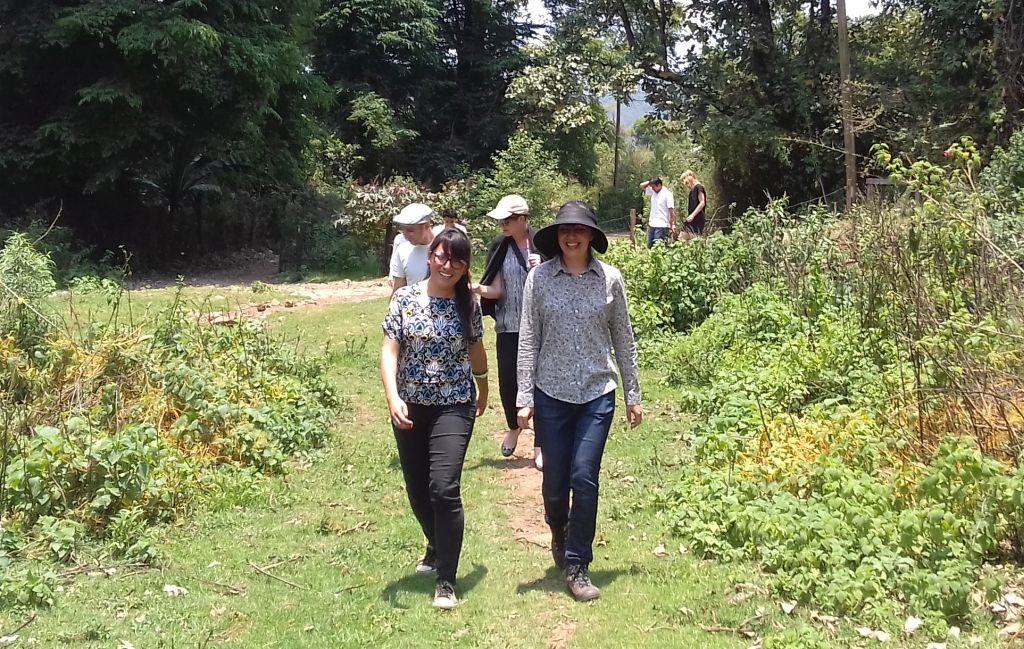
The afternoon was the time for serious playing. My playmates Claudia, Doris, Frederico, Kirby and I, were sitting at a table outside, in the shade. The serious part was to share a learning practice we do that we consider “disruptive”. We invited Doris to start, as the elder disruptor of the group. In 1982, the year I was born, Doris was co-founding what is now Universidad Campesina Indígena in Puebla, Mexico. Doris shared how, before they start the actual learning, they nurture the transformation of the groups of new students into communities of learning. Sometimes it can take up to six months for the meaningful relationships to be formed. Then it was Claudia’s turn to share a few of the practices used in Escuela DIA (Development of Intelligence through Art). Claudia founded the organization that develops the DIA methodology in 1992, when I was already ten. In the meantime they worked with 25.000 teachers. You can read the entire list of practices shared here.
The last activity of the day was for each group to design a theater sketch representing one or several of the disruptive practices of the group. The practice that fired up the the imaginations of our small group was to integrate “pause” in the learning processes, in different shapes or forms. We decided to play with the idea of “pause” and instead of creating a theatre play, we would create moments of “pause” in between the plays of other groups.

You can observe in the image how well a pause fits between (1) a chaotic group progressing from confusion to collective intelligence and (2) a teacher with his troubled pupils that discovers a more personalized, self-directed and mindful approach. The fourth play was about a controversy dialogue and mind-mapping.
Saturday (28th of May) – Ideation and Prototyping
We started our second day in a circle on the grass with Leyla as facilitator. Leyla is a star in the design world. She designed games, installations, booklets but also the Un-School of Disruptive Design in New York. She was a fireball of energy even if she was jumping into our gathering right after a four day workshop she facilitated. She invited us to start by finding three professional connections with three other people in the group. I discovered I was connected with Gaby around using gamification and design thinking in our projects, with Udi around enjoying to facilitate learning and with Liora and Johannes around our intention to develop a meta-university.
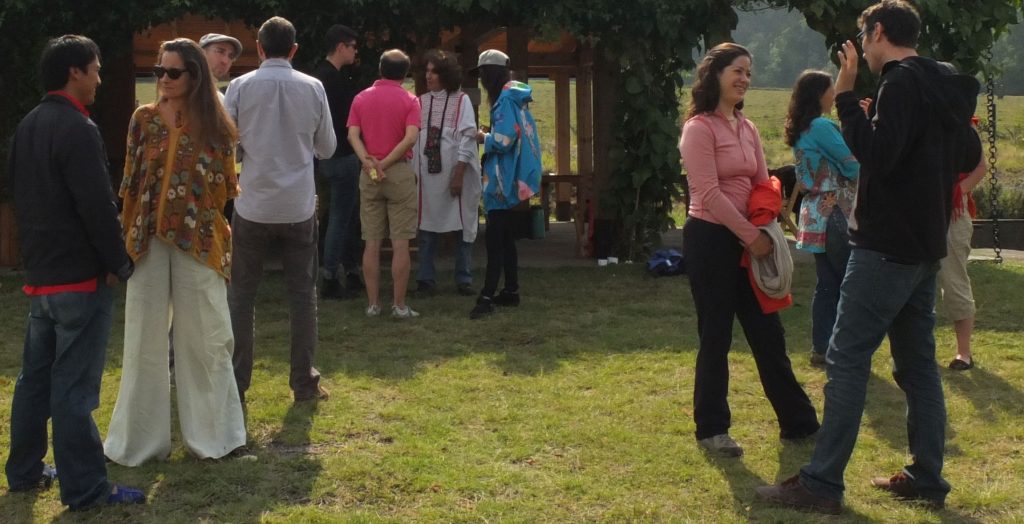
We continued with connecting ideas on six flip charts with the words: Impact, Communication, Validation, Space, Pedagogy and Economics. We also had a page to write questions for each topic.
After we collectively brainstormed and filled the flip charts, we formed a group for each one. In the small groups, we came up with three ideas independently, we shared them and chose one of them to present to the larger group.
On the “Economics” table we synthesized our ideas into something named “Free University Architecture”. Its features are:
- self organized and managed by students who do everything from cleaning to governing;
- the system architecture (software, knowledge) is open source, created in Wikipedia style by hundreds of learning architects around the world;
- the experience (teachers, mentors) would be offered in a gift culture system;
- students will be engaged in productive enterprises and projects that provide resources for expenses like rent and utilities, supplies or books.
Each of the six groups presented, all of us contributed more ideas and we ended up with this whiteboard:
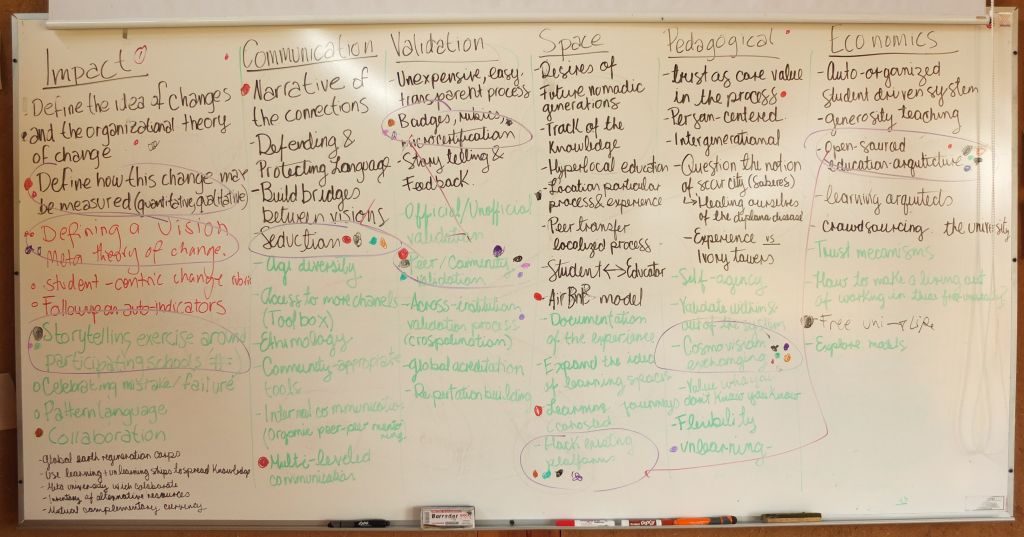
We voted, combined ideas and from the five clusters that resulted we developed five rapid prototypes:
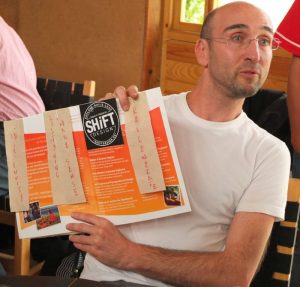 Each of our learning environments aims to stir the world into a different direction and each of us has an implicit or explicit theory of what that change is and how it happens. Then there is the reality of the change we actually produce. This being so central for our work, we want to benefit from looking into the real impact we produce, sharing the raw data related to it and developing methods and tools to evaluate it. This way our theories improve, our reality gets closer to the theory and we inspire each other towards better impact. We will have an online portal to collect stories of our students successes and also of their excellent mistakes while doing their best trying to have an impact. Anyone could look into the data, match it with our theories of change, figure out patterns of change between organizations and even come up with a meta-theory of change.
Each of our learning environments aims to stir the world into a different direction and each of us has an implicit or explicit theory of what that change is and how it happens. Then there is the reality of the change we actually produce. This being so central for our work, we want to benefit from looking into the real impact we produce, sharing the raw data related to it and developing methods and tools to evaluate it. This way our theories improve, our reality gets closer to the theory and we inspire each other towards better impact. We will have an online portal to collect stories of our students successes and also of their excellent mistakes while doing their best trying to have an impact. Anyone could look into the data, match it with our theories of change, figure out patterns of change between organizations and even come up with a meta-theory of change.
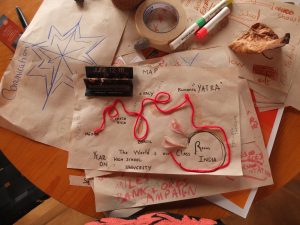 The learning environments in this network are incredibly diverse responses to the same reality: higher education needs to be reinvented. And we are doing this in small experiments, on different continents, inside different movements. Even if we have the common essence of rebellion, the manifestations of it are beautifully diverse ecosystems of learning, thoughtfully designed, forged in experience and fueled by love for learning and people. We are excited by the idea that some learners could self design a “meta-program” that would be a learning journey to a number of these ecosystems. This learning journey, nicely documented, will tell a powerful story of the potential in our friendship and will kindle further collaboration.
The learning environments in this network are incredibly diverse responses to the same reality: higher education needs to be reinvented. And we are doing this in small experiments, on different continents, inside different movements. Even if we have the common essence of rebellion, the manifestations of it are beautifully diverse ecosystems of learning, thoughtfully designed, forged in experience and fueled by love for learning and people. We are excited by the idea that some learners could self design a “meta-program” that would be a learning journey to a number of these ecosystems. This learning journey, nicely documented, will tell a powerful story of the potential in our friendship and will kindle further collaboration.
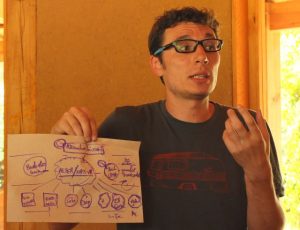 We recognize that certificates and diplomas are at the core of the problem of higher education. Those of us who are not prepared to abolish them completely, want to re imagine them. To that end, we see the potential in Mozilla’s open badges infrastructure. Our collaboration would have three levels: (1) designing and using a pool of (micro)badges together; each of us would aggregate them in macro(badges) in his particular way but we would share the smallest units; (2) the (macro)badges would be mutually recognized and endorsed, even going as far as creating an evaluation that is distributed in the network and awarded by the network; (3) each institution can ask to be peer evaluated and endorsed by the network. The second iteration added the flip side of the idea, where students offer badges to institutions.
We recognize that certificates and diplomas are at the core of the problem of higher education. Those of us who are not prepared to abolish them completely, want to re imagine them. To that end, we see the potential in Mozilla’s open badges infrastructure. Our collaboration would have three levels: (1) designing and using a pool of (micro)badges together; each of us would aggregate them in macro(badges) in his particular way but we would share the smallest units; (2) the (macro)badges would be mutually recognized and endorsed, even going as far as creating an evaluation that is distributed in the network and awarded by the network; (3) each institution can ask to be peer evaluated and endorsed by the network. The second iteration added the flip side of the idea, where students offer badges to institutions.
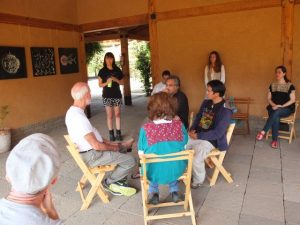 Some of the members of the network emphasized the need to preserve indigenous knowledge systems in the face of the monoculture of thought pushed by mainstream university system worldwide. There is an awareness in our network of the urgency to create real intercultural dialogue. So we see as a distinct task for our network to develop tools that facilitate that intercultural dialogue. For this purpose, we developed a cosmovision exchange exercise. It starts with a “fishbowl setup” where four people from different environments make visible their interpretation of a piece of art and their reactions to what others perceive. Subsequently, the whole group who was watching is involved in a facilitated dialogue.
Some of the members of the network emphasized the need to preserve indigenous knowledge systems in the face of the monoculture of thought pushed by mainstream university system worldwide. There is an awareness in our network of the urgency to create real intercultural dialogue. So we see as a distinct task for our network to develop tools that facilitate that intercultural dialogue. For this purpose, we developed a cosmovision exchange exercise. It starts with a “fishbowl setup” where four people from different environments make visible their interpretation of a piece of art and their reactions to what others perceive. Subsequently, the whole group who was watching is involved in a facilitated dialogue.
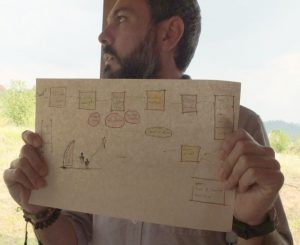 We imagine a near future where the circulation of people between our learning environments will be facilitated by an alternative currency. The working title is UNA. Members of our communities would earn some UNAs by hosting someone in their country and spend them by covering their participation in a program of another learning environment in the network.
We imagine a near future where the circulation of people between our learning environments will be facilitated by an alternative currency. The working title is UNA. Members of our communities would earn some UNAs by hosting someone in their country and spend them by covering their participation in a program of another learning environment in the network.
In between working on these ideas, we refreshed our minds and our bodies with a treasure hunt around UMA campus and of course, with lunch. The treasure hunt was a lovely design that engaged different creative capacities and skills. We built a floating egg nest, we planted, we found our way blindfolded through a minefield and we solved word puzzles. It left me with good creative energy.
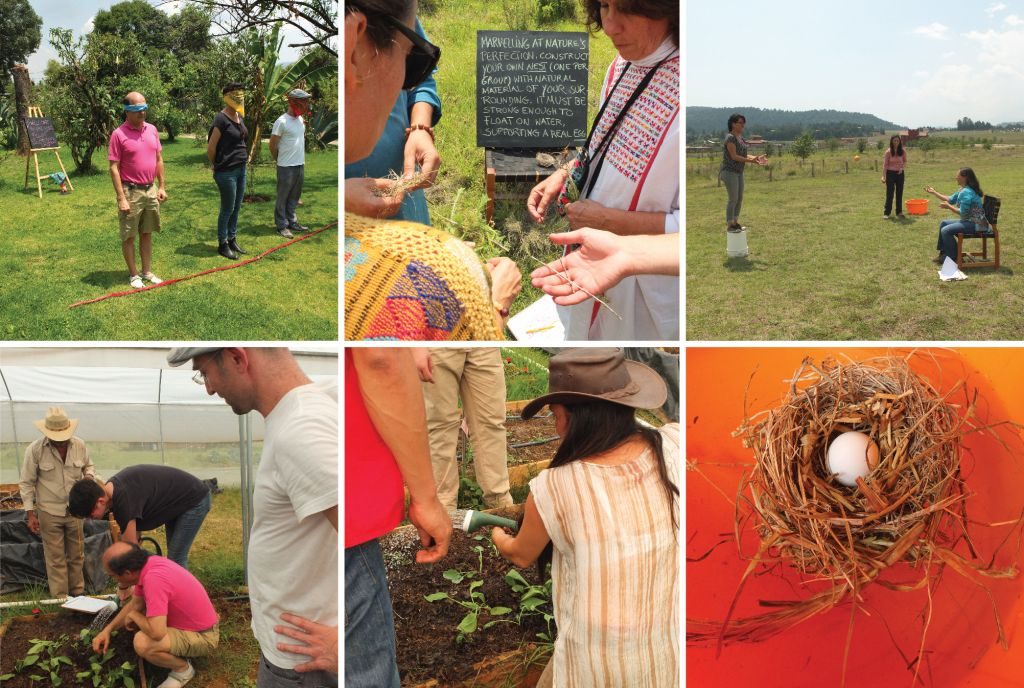
The day ended on a high energy note. So high that right after dinner Genaro and Liora started dancing salsa without music. Some music was eventually improvised and more of us joined in a joyful celebration of a fruitful day.
Sunday (29th of May) – Who does what, when?
Sunday being the final day, we had to get our ideas down to who’s going to do what and when, after we split. I got into a small group working on “the website”. We kept the “phase 1” of the project light so we could complete it in a month. But we need to have a name. We knew it is going to be hard to come up with a name that everybody would embrace. We created a few proposals for the bigger group to choose from. Then in the big group our chief disruptor Leyla seduced us with an even lighter perspective. Let’s just use the platforms that we have or that are already there (like Medium) and communicate about our network in an unstructured and decentralized fashion. We didn’t even chose a common #hashtag. Each of us will choose the #hashtags that we like and we will let time filter the few ones to converge towards. Two examples mentioned were: #ecoversities and #edhack.
We ended up with individual commitments, things that each of us wanted to do. For example I wanted to write this article and help with online facilitation. Victoria is going to catalyze the Learning Journey prototype. Johannes will facilitate the work around our common currency. Udi and Manish will facilitate the merging of “Valle” group with the Ecoversities group that met in Tamera (Portugal) last August. Gaia U will facilitate the development of the “Badge” system with Traian as part of the team. Beyond this there are probably tens of smaller, one on one collaborations and visits that were set up.
We kept our playing habit for the third day with a collaborative game followed by the testing of the cosmovisions exercise that one of the teams designed Saturday. We ended the day by sharing what we learned. You can see in this image some of the keywords.
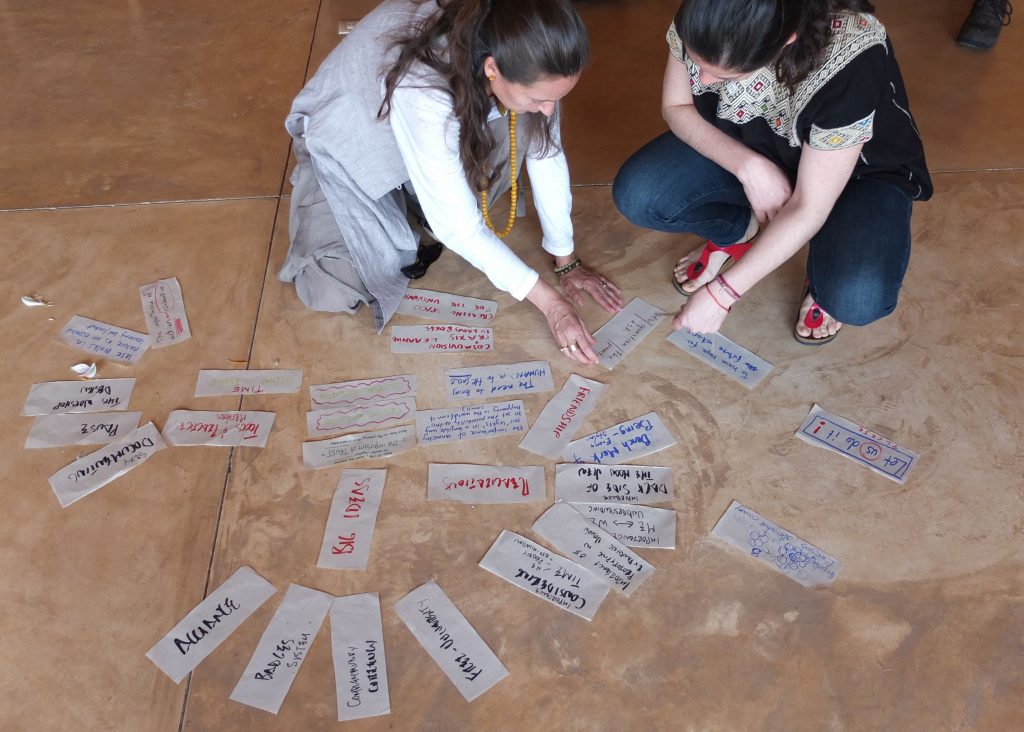
After we closed the formal session Manish facilitated a closing ceremony that was a deep and beautiful gift to take with us, further in our paths. For a few of us the day ended later with a couple of beers in a local bar.
So what (does it mean)?
The Symposium was a standalone gathering but I see the significance of it as part of the process of small alternative universities and un-universities getting closer. There was another meeting in Tamera, Portugal in August 2015 and there will be another one by the end of the 2016. My reflections and learnings are informed only by the Valle de Bravo Symposium but tend to refer to the dynamic of the overall process.
The (centripetal) force is strong
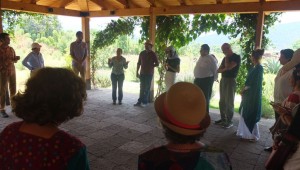 As Udi was saying at one point, these places we’ve built are fragile so we need to stay together. Actually, I see them as intrinsically powerful structures whose fragility comes from going against the current. In any case, our need to stay together is as natural as survival instinct. On the flip-side, our aspiration to steer the world into a different direction needs a much bigger army, so we are natural allies on that road. The values we share are another glue. And on top of all this, the fact that around this common essence we have a wide diversity of architectures, methods, tools, stories and metaphors is a potential treasure that we all see. So what I saw in the meeting was a genuine and strong intention to get closer and weave our small experiments into a connected ecosystem that has more impact.
As Udi was saying at one point, these places we’ve built are fragile so we need to stay together. Actually, I see them as intrinsically powerful structures whose fragility comes from going against the current. In any case, our need to stay together is as natural as survival instinct. On the flip-side, our aspiration to steer the world into a different direction needs a much bigger army, so we are natural allies on that road. The values we share are another glue. And on top of all this, the fact that around this common essence we have a wide diversity of architectures, methods, tools, stories and metaphors is a potential treasure that we all see. So what I saw in the meeting was a genuine and strong intention to get closer and weave our small experiments into a connected ecosystem that has more impact.
Taking the time
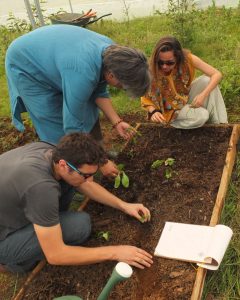 One of my main sources of learning was to experience the pace and the rhythm that is given to the growth of this network by people wiser than me. It is a slow pace that follows with patience the growth of our relationships. I know the challenges that we are taking on are felt with urgency by everyone. The impatient side of me that wanted to jump right away into massive action was now witnessing a counter-side of me, of a more recent date, that can appreciate the power of moving slowly and attune itself to it.
One of my main sources of learning was to experience the pace and the rhythm that is given to the growth of this network by people wiser than me. It is a slow pace that follows with patience the growth of our relationships. I know the challenges that we are taking on are felt with urgency by everyone. The impatient side of me that wanted to jump right away into massive action was now witnessing a counter-side of me, of a more recent date, that can appreciate the power of moving slowly and attune itself to it.
An example of that was the play element in the design: the walk in the woods, the treasure hunt and the collaborative game. I think that if we can enjoy playing together and being together, then our work together can have vitality. It was refreshing to see that Victoria and Leyla artfully introduced that in the design and that the rest of us played along and extended it beyond the formal design. My feeling is that we play well together so I’m confident that we will do great work together. I am also aware that it is going to be a long and slow process before we will see the fruits of this collaboration. We are just growing our roots.
The need to be around old-time rebel doers
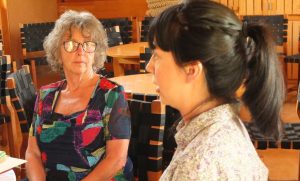 My realization was that in this moment in my journey, I need to be around long time rebel doers. Most of the times I feel like an old-timer: for 13 years I have been investing all my creative energy towards transforming higher education. And as they say, “its not the years in your life, but the life in your years”. So I discovered I highly cherish the time around “rebel learning architects” that have been doing this specific kind of work for even longer, some for 20 or 30 years. My gratitude for this insight goes especially to Liora, who took the time to have long conversations with me in the breaks. (Liora, if you read this: Thank you! I am coming to California for more :-) )
My realization was that in this moment in my journey, I need to be around long time rebel doers. Most of the times I feel like an old-timer: for 13 years I have been investing all my creative energy towards transforming higher education. And as they say, “its not the years in your life, but the life in your years”. So I discovered I highly cherish the time around “rebel learning architects” that have been doing this specific kind of work for even longer, some for 20 or 30 years. My gratitude for this insight goes especially to Liora, who took the time to have long conversations with me in the breaks. (Liora, if you read this: Thank you! I am coming to California for more :-) )
Many times I can’t even ask a specific question because I’m not seeking the explicit knowledge but the tacit one. The wisdom. I realized that I just need time around experienced learning architects to absorb their way of being and seeing the world. To catch the small differences that make a big difference, the insights and the very practical habits they have. So I found myself excited and challenged by the idea of us designing a learning environment for ourselves as learning architects. That could be a strong root for everything else.
The unstructure
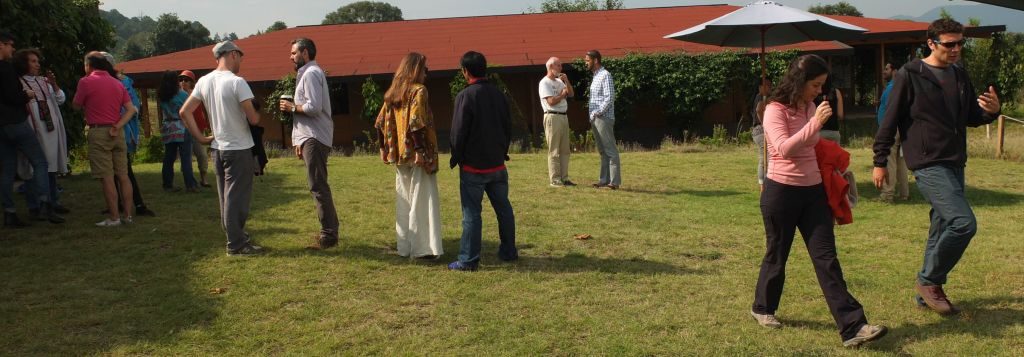 When we gave up the idea of building a website, it was like a relief. It was not shying away from work but more like an instinct shared by the group. A suspicion that traditional infrastructure of a collaboration would be too heavy and energy draining. We want to be lighter and more fluid and use the energy we have in a more free and organic way. So, we won’t spend time to decide what is strategic. It will emerge from where we choose to put our energy. Each of us will choose a way to name it and #tag it. We won’t have a central page but we will write about this in a distributed way and make various aggregations and links. Our experimenting with the “Un-structure” is one of the most exciting things to participate in, for me. Especially so as I feel it is in the direction of our instincts, right on the edge of what we know.
When we gave up the idea of building a website, it was like a relief. It was not shying away from work but more like an instinct shared by the group. A suspicion that traditional infrastructure of a collaboration would be too heavy and energy draining. We want to be lighter and more fluid and use the energy we have in a more free and organic way. So, we won’t spend time to decide what is strategic. It will emerge from where we choose to put our energy. Each of us will choose a way to name it and #tag it. We won’t have a central page but we will write about this in a distributed way and make various aggregations and links. Our experimenting with the “Un-structure” is one of the most exciting things to participate in, for me. Especially so as I feel it is in the direction of our instincts, right on the edge of what we know.
Now what?
What this global group of alternative universities will do next is an interesting question. I know Manish is reminding me to translate a clip for the Ecoversities Film Festival. Udi is preparing the next Ecoversities meeting. Johannes started the mutual currency workgroup. A few of us are playing with an open badge for a recent learning journey we took. As we choose to skip the project management approach, we will have to watch this “thing” emerging from our individual actions synchronized in an uncentralized way. What is clear is that it is alive and it grows. So I invite you to leave a comment below answering the question “Now what?” or just share anything you like. As an example, here are two individual to do lists:
a) research each project and ask for a visit or an interview for #breakfreebook;
b) online facilitation: enliven the space for online conversation in a way that it blends nicely with our offline meetings;
c) kick off a small, “low hanging fruit”, exchange program: with energy of writing a few emails help something like 10 people from the Alternative University travel to other places in the network and recieve 10 to spend some time in Bucharest with us; connect it with the Learning Journey and the UNA currency prototypes.
a) identifying and asking for specific mentoring from the participants that may help me strengthen the processes in UMA for self-agency development and change experience (specifically, I would like to move learners from co-designing one big change-project during the program, to experiencing several smaller change projects that feed into a lighter design of a bigger project by the end of the program;
- b) find space for experimenting the learning process designs and practices that were shared;
c) incorporate into the design of the UMA degrees, the possibility for learners to spend time in any of the network organizations – strongly for the Bachelor’s Degree we are designing.
As a more broad outlook into the future, I know I will dedicate my energy to see universities reinvented on my watch. I believe it won’t be me, or a lone genius, or a Silicon Valley “unicorn” that can achieve that. I bet it will be a collective genius born from trust and friendship of many exceptional learning architects, like the ones gathered in Valle de Bravo. So I can gladly report that in this Symposium at the end of May, humanity made small but significant step towards having a collective genius that will create a new kind of university.
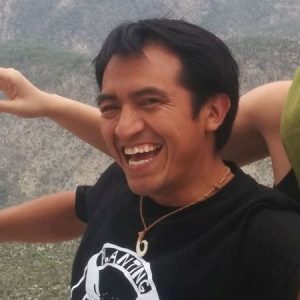
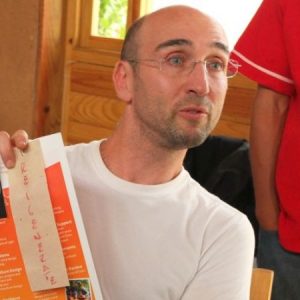
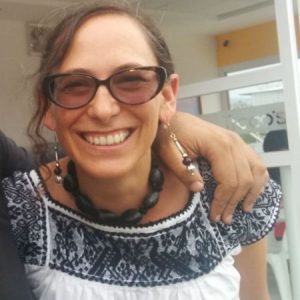
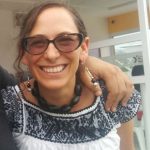
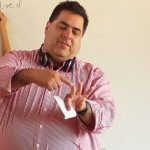
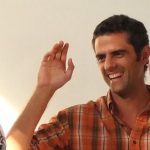
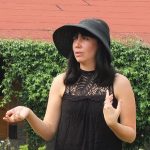
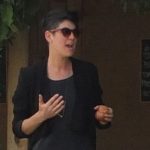
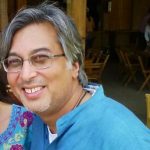
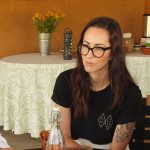
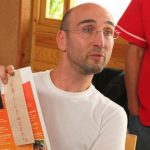
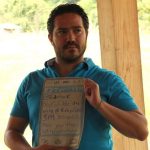
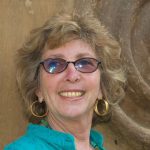
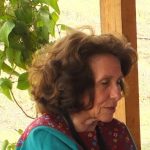
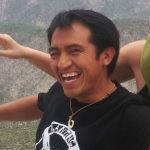
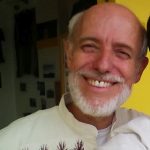
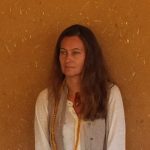
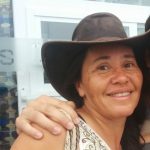
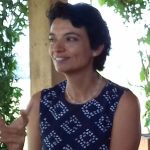
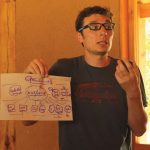
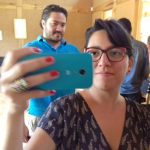
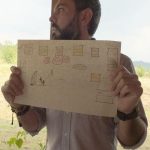
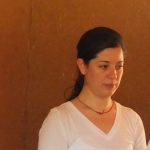
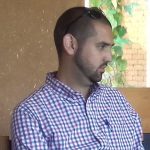
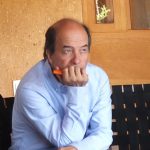
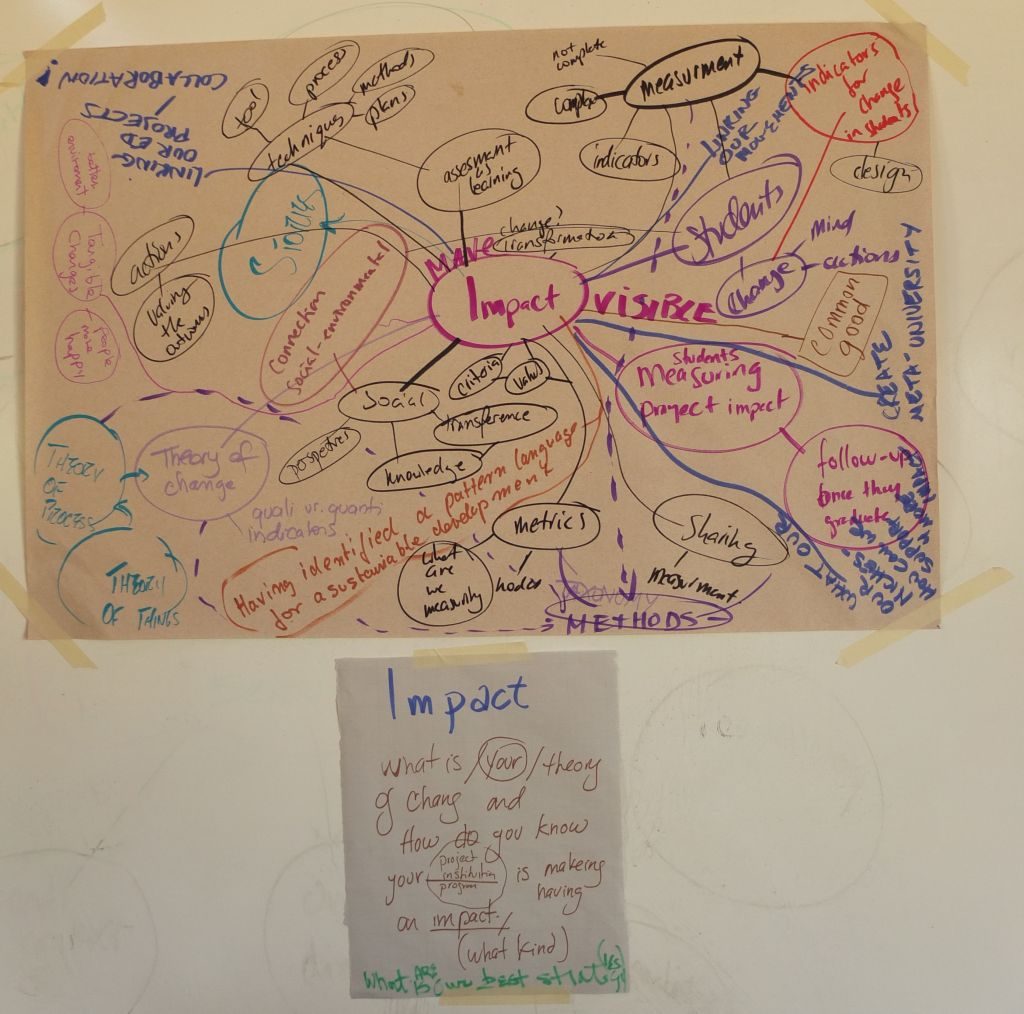
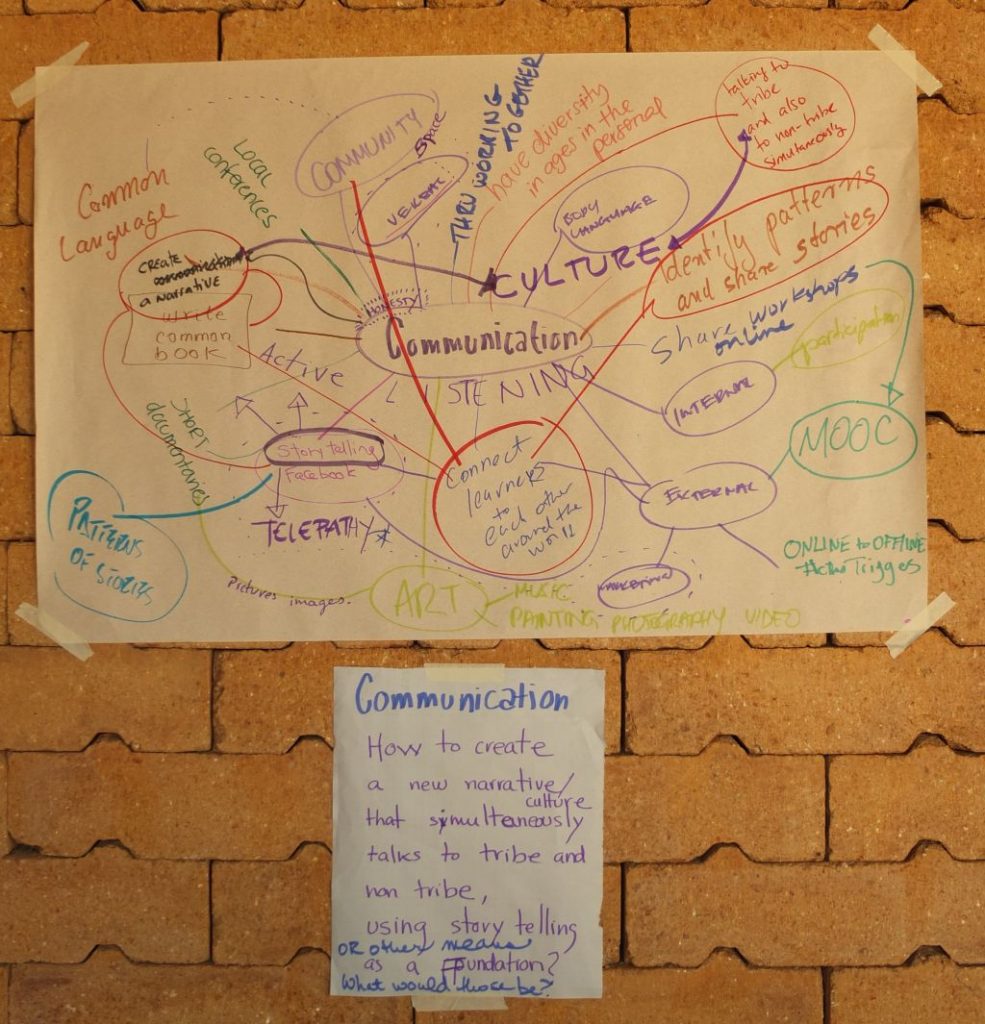
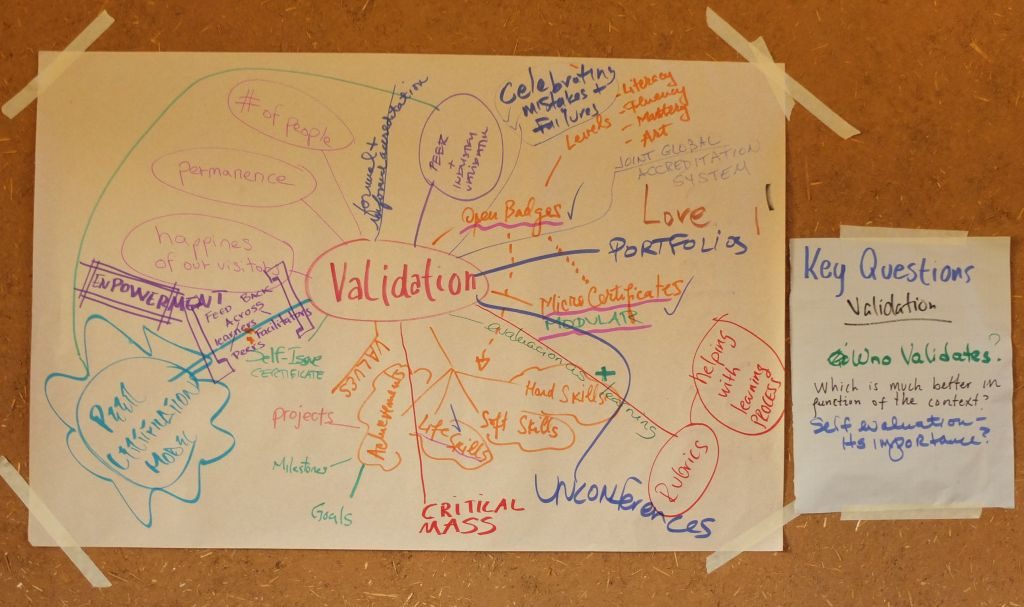
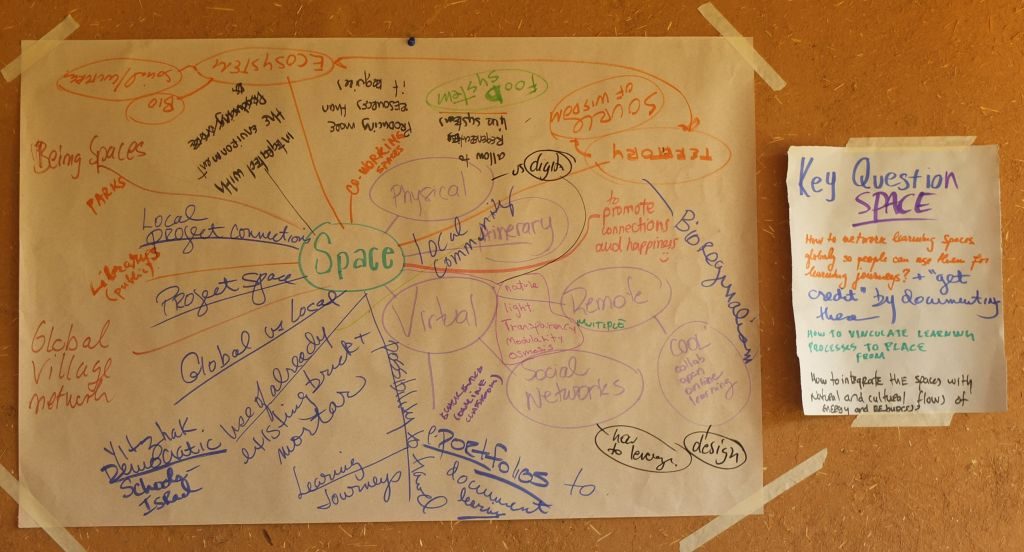
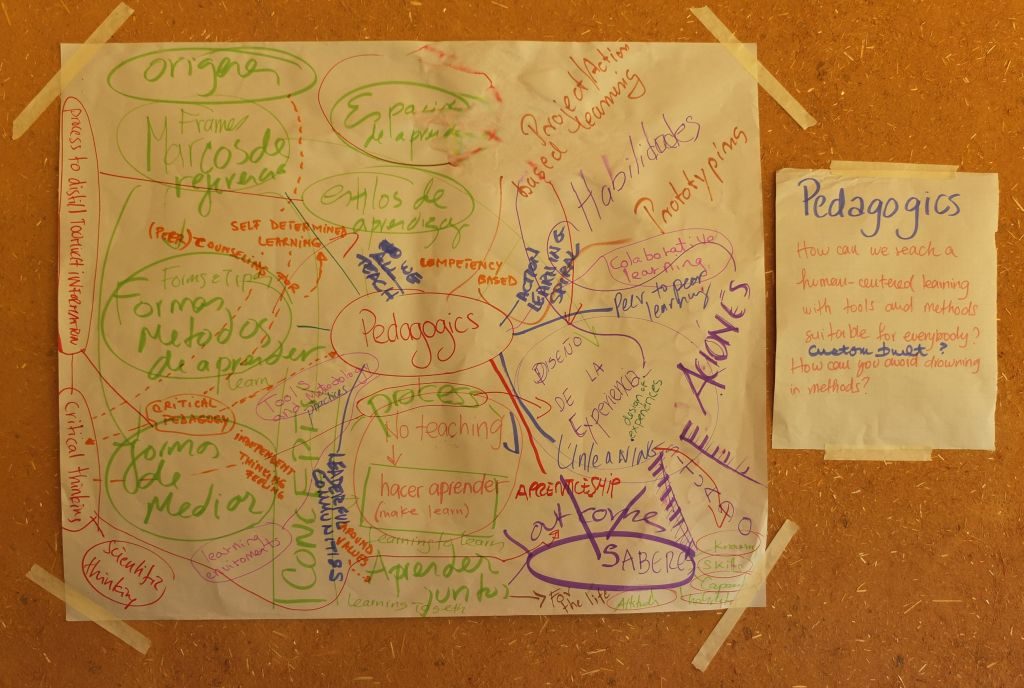
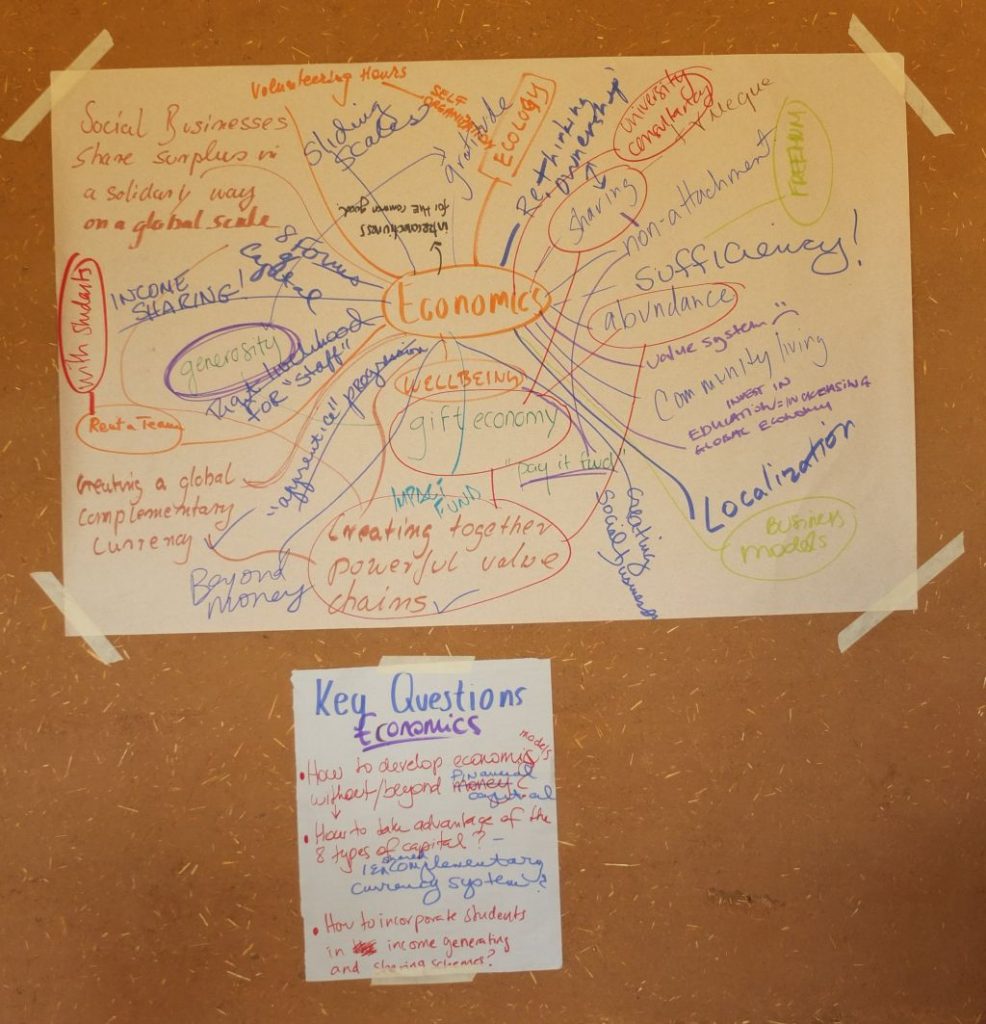
Hi Traian:
Need to re read it it has so much I need to take notes. But as a first reaction I am so greatful for your words and the work put in the document as for the memories that brought back. The Badge is short of the imput you have put in the whole process. Which is what has made it special to be part of the walk in life that this reflection has taken us.
San Cristobal appears to be the right place for reflection.
What a beautiful and articulate article Traian, worthy of the play-full, spirit-full and work-full gather-in we had together. Andrew and I look forward to your visit to CA, USA (along with that of Johannes in late Oct to work on the Mutual Currency approach. Anyone else coming?). I have a few “copy edits” for the article which I will send separately. I look forward to our paths crossing again dear actionists. What a powerful group we are.
Here’s my list of next steps:
Continue work on the Badge/micro-certificate system and connect with others in the Ecoversities network who want to work on this. Gaia U is committed to helping move this forward by supporting the development of a coherent system that contains levels and clusters (our best thinking thus far). We have reassigned work for one of our team members to give him more time to devote to this project.. Longer term goal is to invite and include into the thinking, planning and implementation a number of folks from other networks, ie permaculture, ecovillage, bioregional, indigenous, transition towns, creating a coherent yet agile and organic structure–as in our natural world–some coherency, some agility and wholly organic. Cambia todo cambia.
Present the first conceptual framework at the North American Permaculture Convergence in Sept in CA, USA and then at the next Ecoversitites Gather-in (before the end of 2016?)
Continue work on developing online content courses in which Ecoversities network and others will be invited to participate. The Intros will be offered with no financial capital needed. Coordinate with the offerings that Udi and Manish and Kelly have planned for Ecoversitites Radio and support them as lead organizers for the next gather-in.
Work with Johannes and others around the development of the Mutual currency. Include Andrew in this as he already has experiential and intellectual capital. He has had a skype call with Johannes and we will be on the call Johannes has organized for July 7. Host Johannes (and others) here in CA, USA to work on this project. See how this integrates with the Gaia U “Amates” system already set up but without sufficient reach.
Host Traian (and others?) here in CA, USA to refresh friendships, share insights, develop global strategies, share our mutual social, experiential and intellectual capital.
Visit the projects some of you visited on the Learning Journey next time we are in Mexico (December?) (Sorry I missed that Journey but had the healthful healing rest I needed. Feeling well and now more than 6 months seizure-free. Yes!)
Keep the torch burning (though on the back burner for now) for the Earth Regeneration Corps, the Learning Ships and other global strategies we might be inspired to manifest!
Stay in touch with all of you in various ways and see you soon for more work in service to the mother of us all, Pachamama.